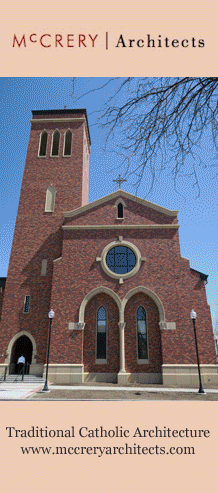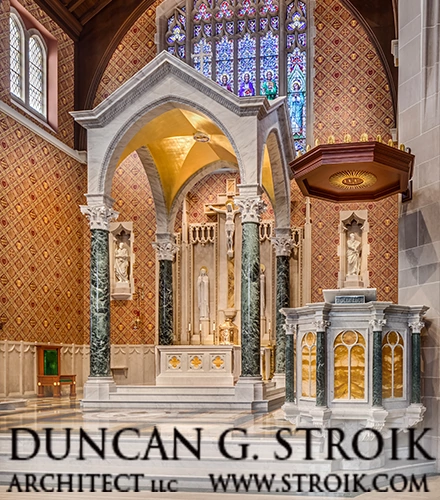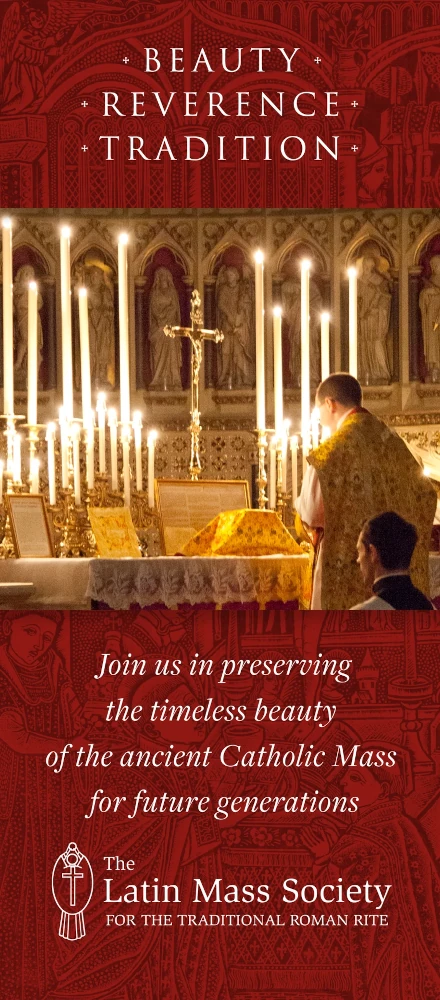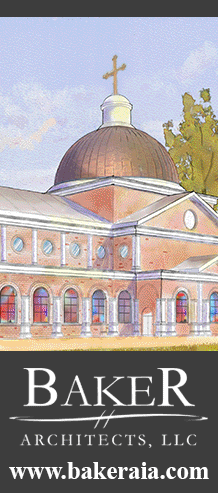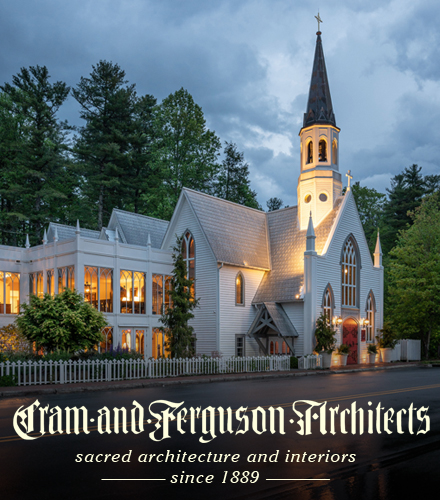This post will provide ongoing coverage of the Papal Vespers service that will be occuring shortly from the Crypt Church of the Shrine Basilica of the Immaculate Conception in Washington, D.C.
Readers may recall an NLM report that the Pope is expected to wear a historic, turn of the century gold cope for the Vespers service this evening.
Some readers had wondered if the Pope would wear the white Easter mozzetta while in the United States. Here is your answer in the affirmative:
(Arriving at the Basilica, the Pope stops to pray before the Blessed Sacrament)
In preparation for the vespers, the choir is presently singing a beautiful piece of renaissance polyphony.
(You will note, there are six candlesticks and central cross upon the altar. I am delighted to already see this arrangement making its way into the papal liturgies of this visit. The papal witness to this arrangement is very important. We have heard it will appear in New York's St. Patrick's Cathedral, and I am hopeful it will appear in the other Mass as well.)
(Here is the century old gold cope that was reported.)
From a musical perspective, the psalms are in English (to be expected) and are done in the tones I have typically heard for the modern Liturgy of the Hours in English. I will leave it to our music people's expertise on this point.
(The Magnificat was also done in beautiful traditional form of mixed chant and Renaissance polyphony)
An interesting note here where the Pope again teaches, this time by practice, of "conversi ad Dominum" -- turning toward the Lord in the liturgy, as seen in the practice of turning towards the symbol of the Cross.
The altar was setup with the altar cross and candlesticks on the liturgically Western side of the altar -- ie. closest to the nave. This can be seen in the pictures. This means the Pope would go to the liturgically Eastern side of the altar to reverence it at the beginning and end of vespers, just as would be done in a versus populum liturgy.
However, the corpus on the altar cross was directed toward the nave where the people sat, rather than toward the "Eastern" side of the altar, or in other words, what would be facing the celebrant where it a Mass in this configuration.
Given this, when it came time for the Pope to incense the altar at the Magnificat, he began, not from the side of the altar where he reverenced, facing towards the people, but rather on the side of the altar as would be done traditionally.
In so doing, the Pope was facing the Lord crucified upon the cross. He was "turning towards the Lord" (conversi ad Dominum) and was ad orientem liturgicum.
Little things like this may seem little and may even be little, but that doesn't make them insignificant. Rather, they help emphasize a point, particularly when seen over and over in different venues.
(In this picture you can see the corpus on the cross, which helps illustrate what I was referring to above)
(The final blessing)


